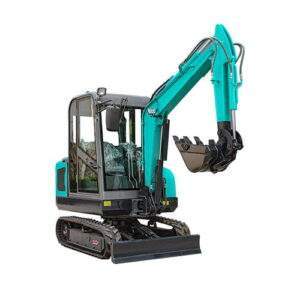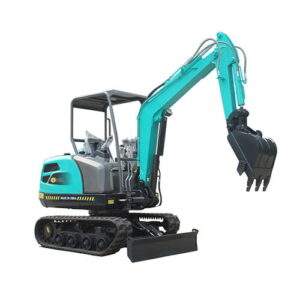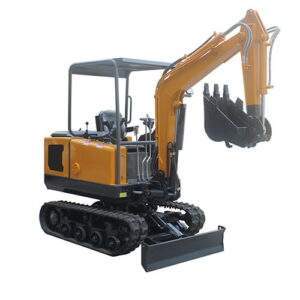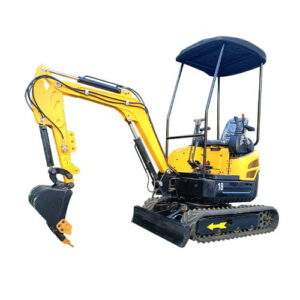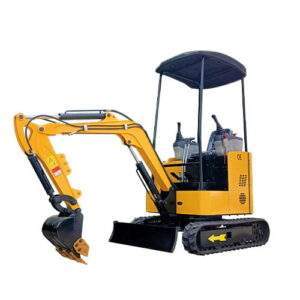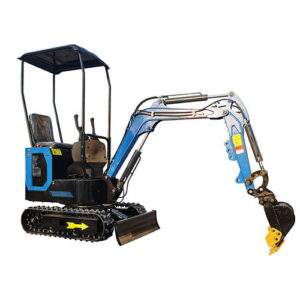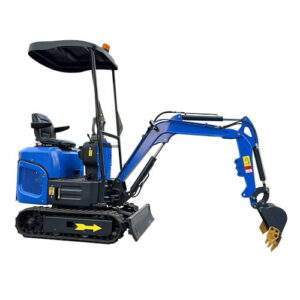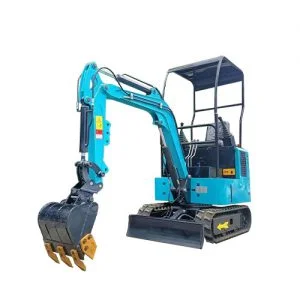The Future of Excavation: Full-Function Mini Excavators Leading the Way
Introduction

In the ever-evolving realm of construction and infrastructure development, excavation stands as a cornerstone activity, shaping landscapes, laying foundations, and carving out pathways for progress. Traditionally, large, powerful excavators have dominated the excavation scene. However, the landscape is shifting, with full-function mini excavators emerging as frontrunners in the future of excavation. Their compact size, versatility, and maneuverability make them indispensable tools for a wide range of projects, from urban construction to utility work and landscaping.
The Evolution of Excavation Equipment
Excavation, a fundamental process in construction and earthmoving projects, has seen remarkable advancements in equipment technology over the years. From humble beginnings to cutting-edge machinery, the evolution of excavation equipment has transformed the way we approach digging, grading, and earthmoving tasks.
In the early days of construction, manual labor and basic hand tools were the primary means of excavation. Workers relied on shovels, picks, and wheelbarrows to excavate soil and move materials, a labor-intensive process that was both time-consuming and physically demanding.
However, as industrialization took hold and the demand for infrastructure projects grew, the need for more efficient excavation methods became apparent. This led to the development of mechanical excavators powered by steam engines in the 19th century, marking a significant milestone in the evolution of excavation equipment.
The advent of diesel engines and hydraulic systems in the 20th century further revolutionized the industry, paving the way for the modern excavators we see today. These powerful machines, equipped with hydraulic cylinders, buckets, and tracks, are capable of tackling a wide range of excavation tasks with precision and efficiency.
In recent years, advancements in technology have propelled the evolution of excavation equipment even further. Excavators equipped with GPS and telematics systems enable operators to work with unprecedented accuracy, minimizing errors and optimizing productivity on the job site.
Moreover, the demand for more environmentally friendly construction practices has spurred innovations in electric and hybrid excavators, reducing emissions and minimizing environmental impact.
Features and Capabilities
Compact Design: Full-function mini excavators are characterized by their compact size, which allows them to navigate through tight spaces and confined work areas with ease, reaching locations inaccessible to larger equipment. This compact footprint not only enhances maneuverability but also maximizes efficiency in projects where space is limited, making full-function mini excavators indispensable tools for construction, landscaping, and utility tasks in urban environments.
Versatility: Despite their compact dimensions, full-function mini excavators are outfitted with an extensive array of attachments and capabilities, enabling them to undertake a diverse range of tasks with proficiency. These versatile machines excel in activities ranging from excavation and trenching to grading and lifting, showcasing their adaptability and efficiency across various construction, landscaping, and utility projects. Whether it’s digging trenches for utilities, shaping terrain for landscaping projects, or lifting and moving materials on job sites, full-function mini excavators prove to be indispensable assets, offering versatility and productivity in a compact package.
Maneuverability: With their agile design and precise controls, full-function mini excavators offer exceptional maneuverability, enabling operators to work with precision even in challenging terrain conditions.These versatile machines are perfect for a wide range of applications, from landscaping and construction to utility work and more. Whether navigating tight spaces or digging trenches, mini excavators deliver powerful performance in a compact package.
Anatomy of a Full-Function Mini Excavator
Full-function mini excavators, also known as compact excavators, are designed to pack the power and functionality of larger excavators into a smaller, more agile package. Their key features include:
Compact Size: Mini excavators typically weigh between 1.5 and 5 tons, allowing them to operate in confined spaces and navigate challenging terrain.
Versatility: Mini excavators are equipped with a full range of attachments, including buckets, breakers, augers, and thumbs, enabling them to handle a diverse array of tasks.
Maneuverability: Their compact size and articulated design provide exceptional maneuverability, allowing them to work in tight corners and close to obstacles.
Operator Comfort: Mini excavators offer comfortable and ergonomic operator cabins, reducing fatigue and enhancing productivity.
Ease of Transportation: Their compact size and weight make them easy to transport on trailers or in pickup trucks.
Benefits of Full-Function Mini Excavators

The adoption of full-function mini excavators brings a multitude of benefits to the excavation industry:
Enhanced Efficiency: Their maneuverability and versatility allow them to complete tasks more efficiently than larger excavators in confined spaces.
Reduced Costs: Lower operating costs, including fuel consumption and maintenance, contribute to overall project savings.
Minimized Site Disruption: Their compact size minimizes site disruption and damage to surrounding structures.
Improved Safety: Their smaller size and lower center of gravity reduce the risk of tipping and other safety hazards.
Expanded Application Range: Mini excavators excel in a wider range of applications, from utility work to landscaping and interior demolition.
Table: Comparison of Full-Function Mini Excavators to Traditional Excavators
| Feature | Full-Function Mini Excavators | Traditional Excavators |
|---|---|---|
| Size | Compact (1.5-5 tons) | Large (5 tons and above) |
| Maneuverability | Excellent | Limited |
| Versatility | Wide range of attachments | Limited attachment options |
| Operating Costs | Lower | Higher |
| Site Disruption | Minimal | Significant |
| Safety | Improved | Potential for tipping hazards |
| Application Range | Wider (utility work, landscaping, interior demolition) | Narrower (large-scale excavation, heavy lifting) |
Conclusion
Full-function mini excavators are revolutionizing the excavation industry with their compact size, powerful performance, and versatility. As we’ve seen through case studies and statistics, these machines offer significant advantages in terms of cost, environmental impact, and safety. As technology continues to advance, we can expect mini excavators to become even more sophisticated, further solidifying their place as the future of excavation.
FAQ
Q: Are mini excavators as powerful as traditional excavators?
A: While they may not match the raw power of the largest traditional excavators, full-function mini excavators are designed to deliver high performance within their size class, making them suitable for a wide range of tasks.
Q: How do mini excavators impact the environment?
A: Mini excavators are generally more fuel-efficient and produce fewer emissions, making them a more environmentally friendly option. Their smaller size also means less ground disturbance, reducing the environmental impact of construction projects.
Q: What are the safety considerations when operating a mini excavator?
A: Safety features such as advanced control systems, cameras for visibility, and compact design for better sightlines contribute to a safer operating environment. Operators should still follow all safety protocols and receive proper training.

